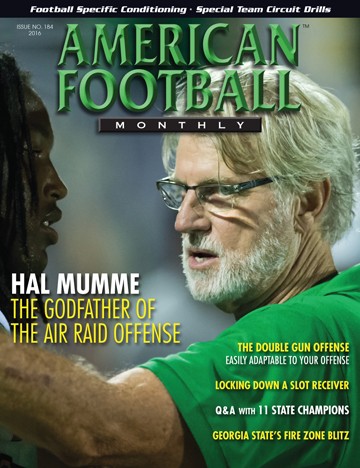Article CategoriesAFM Magazine
|
Maximize Offense in the Real World of High School Footballby: Jay StolfiYouth Coach © More from this issue Introduction The Double Gun offense is unique because it offers such a wide variety of options with one simple, time-efficient system. This article expands upon the introduction of the basic Double Gun offense (Gridiron Strategies Vol. 14 No. 2) which illustrated how teams can run varying formations under one set of unifying blocking rules. The simplicity of using one set of rules to execute both the power-laden double wing, and pass-friendly shotg....The full article can only be seen by subscribers.
|
|
|||||||
| HOME |
MAGAZINE |
SUBSCRIBE | ONLINE COLUMNISTS | COACHING VIDEOS |
Copyright 2025, AmericanFootballMonthly.com
All Rights Reserved





